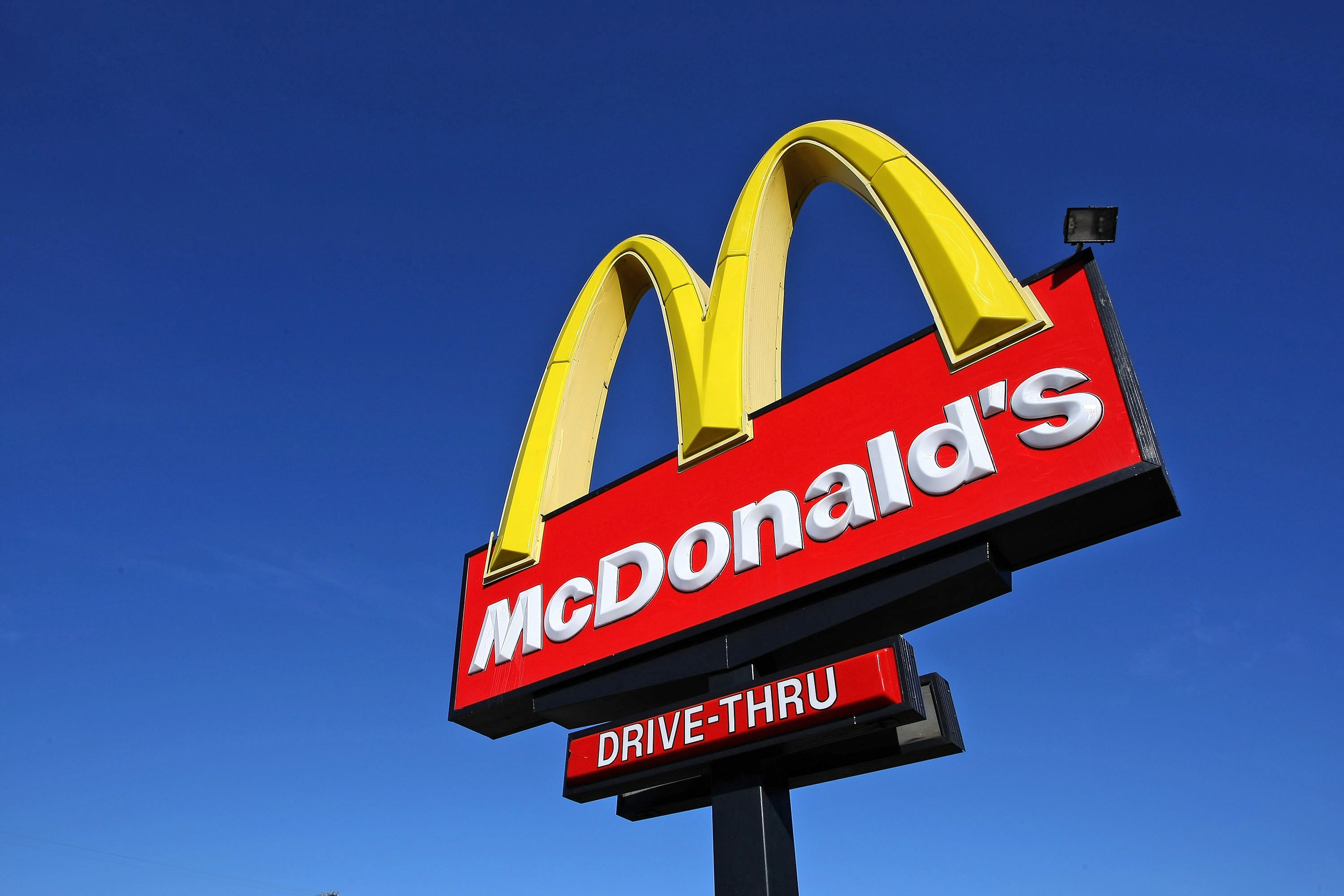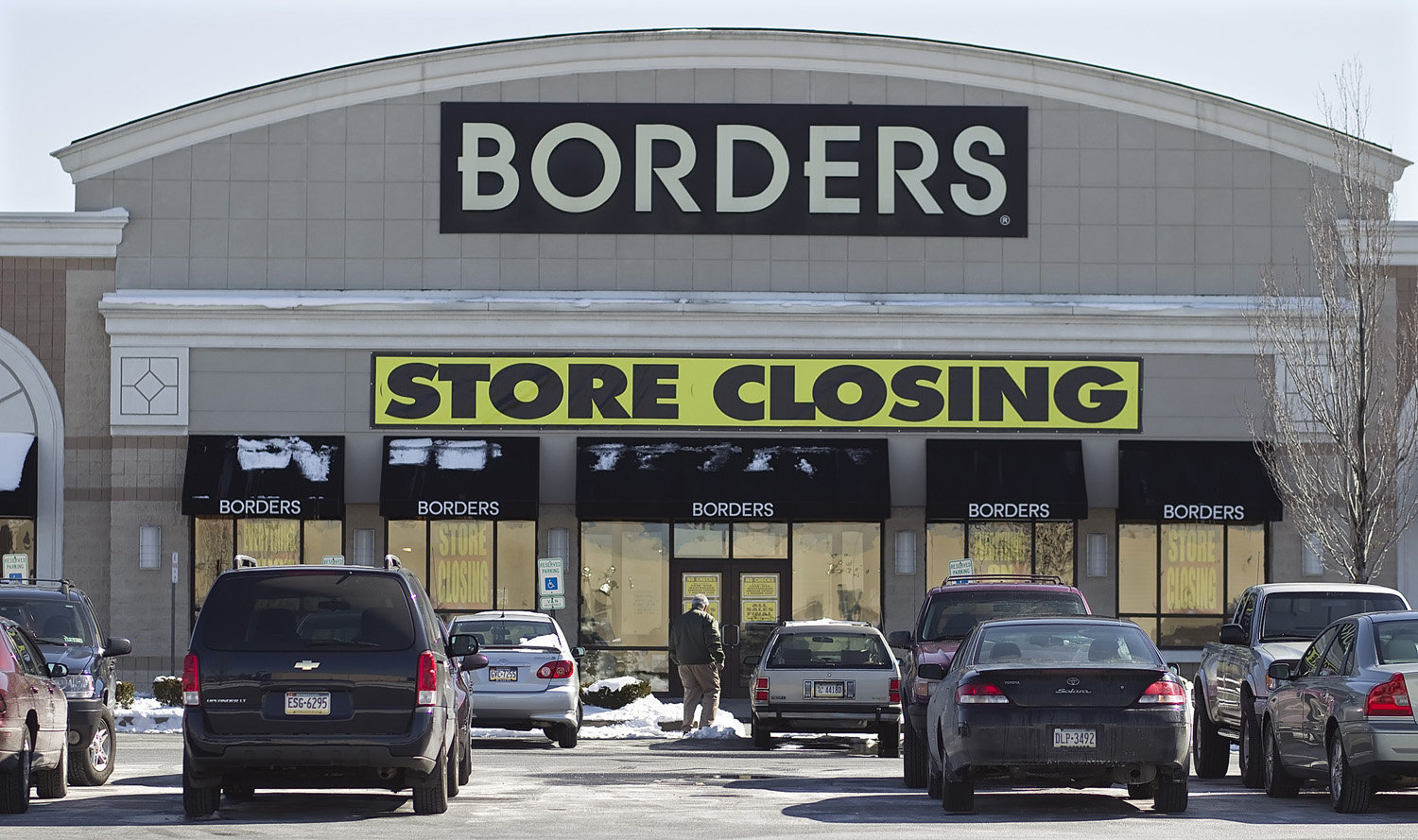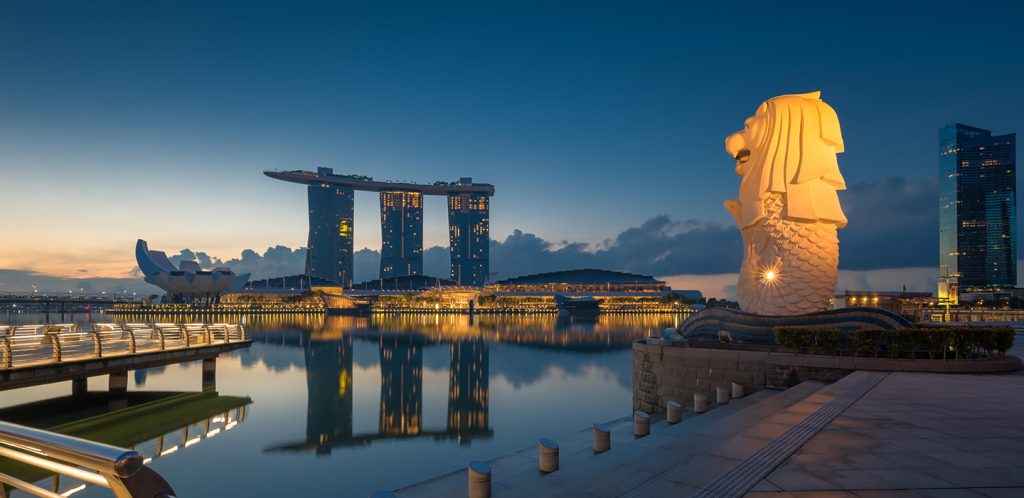BY DR. TANAI CHARINSARN
AUGUST 31, 2016
Big company: Strategies for success that cannot be overlooked
The company we will discuss today is a company that has a significant influence on the global IT industry. It is IBM (International Business Machines), which was founded over 100 years ago. IBM started as a computer business, utilizing technology to make more money. IBM's products range from typewriters to computers, and the company has consistently grown. However, IBM began to face problems as it tried to do everything but couldn't do everything well. Every business unit had its issues.
During this period, IBM's main hardware, Mainframe, began to see reduced demand from consumers who were increasingly using server systems. The PC business unit also suffered due to the fact that IBM didn't have its own CPU (Control Processing Unit) and the software came from Microsoft. This led people to prefer building platforms on Microsoft's software, ultimately causing IBM's software to lose market share and become irrelevant.
IBM started losing more than 8 billion dollars, and its cash flow was depleted in 1993, reaching a historic low in the United States. However, IBM quickly turned things around the following year, making a profit of over 3 billion dollars. The business continued to grow steadily, to the point that even Warren Buffet, the world's most successful investor, decided to invest in IBM's technology sector. This was a notable decision since Buffet had previously declared he wouldn't invest in technology stocks due to the rapid changes in the industry and high investment costs. Nevertheless, Buffet didn't consider IBM just a technology company but rather saw it as a service company. He foresaw that the future of technology would be increasingly complex, and people would need experts and teams to solve their technology problems.
How did IBM do it? Lou Gerstner, a top IBM executive, wrote a book called "Who Says the Elephant Can't Dance?" This book is about IBM's transformation at the time and how they survived their crisis. The book's title is fitting as it illustrates that, when individuals come together and work as a team, they can accomplish much more. Lou Gerstner advised that each business unit should become a subsidiary company, fostering focus and competition among them. If a unit couldn't generate profits, it was closed down. He also believed that working together created more negotiating power for the business since customers wanted solutions to their problems, not just products.
IBM chose to reduce manufacturing costs by cutting unnecessary expenditures, closing factories, and laying off employees who weren't related to future business plans. They decided to exit the PC business, selling it to Lenovo, a very wise decision considering that Lenovo wanted to enter the global market. IBM's decision to sell its PC business at a time when it was still profitable allowed them to sell it at a high price. IBM transitioned into a service company, focusing on providing technology solutions, not just products.
IBM's culture and organizational factors contributed to their long-term sustainability. They created a new culture, "Win-Execute-Team," which aimed to focus on the collective success of all units. Each unit had to work together to succeed, using their expertise to help one another. IBM began selling as a total solution, including hardware, software, and after-sales support. They returned to their core, which was the technological expertise of their employees, who were used according to customer needs. This strategy led to sustained growth, and that's where IBM stands today.
BY DR. TANAI CHARINSARN
AUGUST 12, 2016
"Strategy" is not difficult; it's easy to understand and can lead to business success.
When we talk about the word "strategy," very few people truly understand its meaning. Often, executives or businesspeople use the term without fully grasping its true significance. Many marketers also use the word whenever they want to showcase their achievements, but what they present is merely a plan or an activity. It can hardly be considered a genuine business strategy. Therefore, when it comes to conducting business, the term "strategy" implies what an organization does differently from its competitors, leading to superior business results.
For a good strategy, the key is to stand out clearly from competitors to achieve better business outcomes. This is referred to as a "Winning Strategy," a strategy designed to make one's business excel in competition. If a business lacks a good strategy, its operations may be akin to working day by day. It might perform better or worse than its competitors, but it fails to create a distinctive presence. This distinctiveness or excellence of an organization is essential for business success. If we observe businesses worldwide, we'll find that every successful business has something different from others, which enables it to succeed and thrive.
In this context, let's take the example of a bakery business in Thailand that we are all familiar with - the S&P brand. S&P has adapted to the local market environment and effectively responded to consumer behaviors. As a result, the brand continues to enjoy continuous popularity with customers and has expanded its business in various aspects. This is in contrast to many previously famous food establishments that had to close down or couldn't grow.
Example of S&P Business
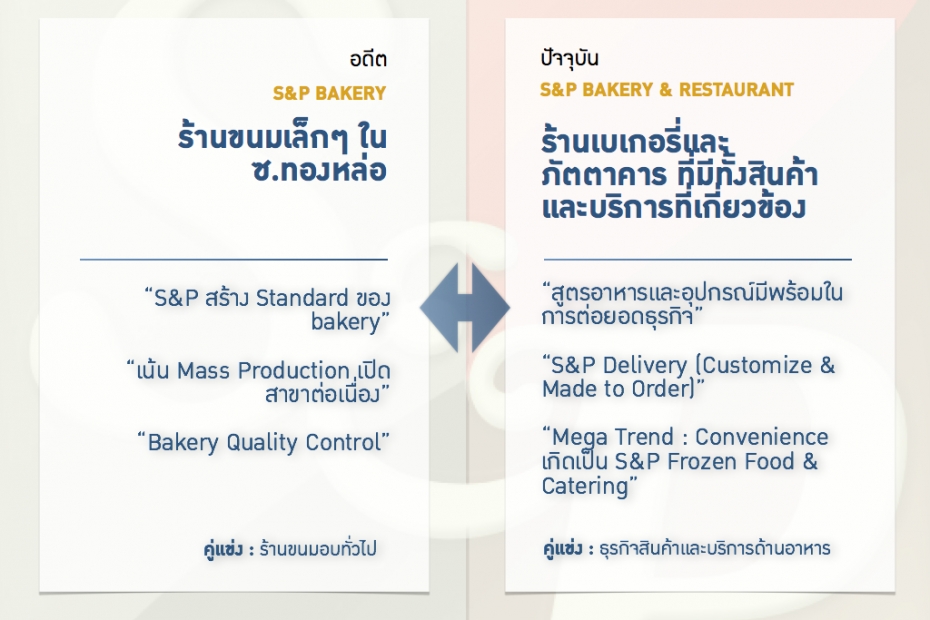
Monitoring market trends and consumer behaviors is crucial, and the impact of globalization further emphasizes the similarity among people worldwide. Seamless communication allows us to freely exchange lifestyle and technological trends. Therefore, learning the business environment and behavior has a role in helping us develop a suitable strategy for our business. Evaluating whether our business has a good strategy or not is necessary.
BY DR. TANAI CHARINSARN
JUNE 30, 2016
"Big Companies: Strategies for Unavoidable Success"
The failures of giant companies like Kodak and Borders may lead us to wonder whether a large and well-established business can indeed adapt and survive. The answer is that everything in the world can change if we understand and handle situations with awareness and correctness. The large company I want to talk about today is one that many did not expect to make a remarkable comeback: McDonald's.
The service industry certainly relies on consistency. For instance, when we go to a hair salon, we want the hairdresser to maintain our usual hairstyle, provided they are skillful and capable. Unless we desire a change, we expect the same style every time.
McDonald's is no different. It used to be a large business that faced significant problems but managed to pull itself back to the top. For the past few decades, McDonald's has utilized a standardized process. They have turned their restaurants into what is essentially a factory with systems for both production and service. Most of what we commonly see at McDonald's is the result of this standardized production process, primarily located at the counters. This includes the use of automated fryers with a timed switch to ensure that the quality of the fries coming out is consistently golden, crispy, and aromatic, something that many customers appreciate.
McDonald's strategy of standardizing its business processes has proven to be effective. It has helped the business grow and become more profitable. Customers come and go, and there is a rapid turnover of staff members. Training employees to start working does not take much time, which contributes to the company's success over time.
Business involves both ups and downs.
The crisis period for McDonald's started in 2002, following the rapid and extensive expansion of the company's branches. Managing food quality consistently was no longer as easy as before. McDonald's service quality at that time significantly declined, dropping even below the standards of the U.S. Internal Revenue Service. This led to a decrease in sales per branch, and ultimately, McDonald's began facing financial losses for the first time.
The growing trend of health consciousness became a significant negative factor for McDonald's business. People began to define McDonald's as "junk food." McDonald's market share continued to decrease continuously. The business crisis persisted until 2004 when CEO Jim Cantalupo suddenly passed away due to heart failure while working at a Florida location. The company's image deteriorated further, with rumors that perhaps he consumed too many hamburgers. Even Charlie Bell, who took over as CEO after Jim Cantalupo, submitted his resignation after being diagnosed with cancer, and he passed away one month later. McDonald's image hit rock bottom, and the company seemed to be in a crisis it might not survive.
Additionally, the growth of competitors like Burger King, the popularity of Asian fried chicken brands like KFC, the health-conscious trend that introduced other fast food options like Subway, and various well-known pizza brands entering the market contributed to a growing number of players in the industry. However, McDonald's marketing and management teams did not do much to make the brand more appealing, apart from setting special menus and price promotions, which failed to attract consumers as expected. Consumers changed their behavior and started choosing other brands.
The arrival of the new CEO, Jim Skinner, was a turning point. Skinner had previously worked in McDonald's kitchens since his teenage years, although he did not have a college degree. However, he had a deep understanding of the operations of McDonald's. He was known for being a quiet and reserved person and even stated in interviews that he never imagined he would become the CEO. Nonetheless, due to the untimely deaths of both CEOs before him, Skinner assumed the role and excelled in it.
During his tenure, Skinner focused on understanding the heart of McDonald's restaurant business deeply. He knew that for the business to survive and thrive, the core operations, including the taste of food, cleanliness, and speed, had to meet the highest standards consistently.
Jim Skinner's Strategic Concepts: Back to Basic.
Jim Skinner began by managing the back-end operations, addressing issues in the kitchen systems of McDonald's. He found that McDonald's restaurant management was not efficient, and the extensive expansion had made the business more complex. This prompted a change in the direction of the business, and Skinner introduced a new perspective.
Increasing Customer Purchases: Skinner focused on increasing the volume of each customer's purchase when they visited. He achieved this by introducing new products within the restaurants. One notable example is the introduction of a dedicated beverage service area, McCafe. Additionally, new menu items like the Snack Wrap gained popularity in the global market.
Strengthening Bargaining Power in Sourcing: Skinner aimed to reduce the company's costs. He introduced the concept of a product platform, which made it convenient to manage the business. For example, he created a Chicken platform for various chicken-based products, including chicken nuggets and chicken burgers. This approach simplified negotiations with suppliers and enhanced bargaining power.
Adapting to Local Markets: While McDonald's had become a global business with uniform menu items, Skinner realized the importance of adapting to local markets. He allowed each country more freedom to design their own menus as long as they maintained cost control, quality, and standardized production processes similar to the main menu. This change made local customers more interested in McDonald's and increased their preference.
Outpacing Competition: In 2011, data from Technomic estimates revealed that McDonald's was the world's largest fast-food restaurant, leading in terms of market share and revenue per outlet, outpacing competitors like Starbucks.
These key changes indicate the real success of McDonald's. Despite past management challenges, resistance to health-conscious food trends, and competition, Jim Skinner's abilities, beliefs, and vision transformed McDonald's into a global giant leading the fast-food industry with no close contenders.
BY DR. TANAI CHARINSARN
JUNE 2, 2016
The business discussed here is the bookstore business, which has evolved significantly in recent times. In the past, bookstores were not very popular because they were often disorganized and had an overwhelming amount of books. However, with the rise of the Knowledge Economy, bookstores transformed to meet the changing demands of consumers. Borders is a new bookstore that recognized the business opportunity in this transformation. One of the strategies Borders used was to adopt the concept of a superstore, making it more attractive for consumers to enter and spend time in the store. They also organized books into categories, making it easier for book lovers to find the books they wanted to read, which increased the popularity of using their services.
Furthermore, Borders hired knowledgeable staff to guide customers and recommend new books, attracting more people to use their services. They also created a reading-friendly environment by incorporating cafes and providing free internet access, making it a more appealing place to read books. Borders implemented these strategies by leveraging the advantages of the traditional bookstore business model.
Why did this large-sized model fail?
The growth of the global online marketplace, such as Amazon.com, the world's largest online bookstore, provided customers with a much wider selection of books compared to traditional bookstores with limited physical space. This impacted the traditional bookstores' ability to offer all the books that customers desired. Amazon's success relied on selection, variety, and pricing strategies, which presented a challenge for physical bookstores.
One of the key issues facing traditional bookstores is their need for prime physical locations, which drives up their operating costs. The "Long Tail Strategy" by Chris Anderson highlights the problem; online businesses do not have the limitations of physical stores and can offer a broader range of products. However, this raises the question of how traditional bookstores could sustain themselves economically. As Chris Anderson's work suggests, in the digital age, many products and services are expected to be free, which means that businesses must find alternative ways to generate revenue.
Moreover, digital downloads made it easier for consumers to choose to download music and books over buying physical copies, whether through legal platforms like the iTunes Store or illegal means through file-sharing websites. The advent of big-box retailers like Walmart and Target entering the book market added further competition by offering books at discounted prices. Retailers such as 7-Eleven's Book Smile in Thailand, which provided convenient access to books, further drew customers away from traditional bookstores.
Where did Borders go wrong?
The signs of Borders' failure were not sudden, but the company's response to the changing landscape led to its downfall. Borders initially partnered with Amazon.com, allowing its customers to choose books through Amazon. This inadvertently increased Amazon's customer database as they became responsible for book deliveries, making customers realize Amazon had a broader selection of books.
To combat this, Borders tried to attract former customers back by offering a free membership program, with no fees. However, this strategy did not significantly incentivize customers to return and purchase more books. Additionally, the opening of new stores without evaluating the performance of existing ones increased costs and made it harder to maintain a profitable business. Finally, the growth of e-books, coupled with Borders' decision to become a showroom for e-reader manufacturers, where they didn't have their own brand of e-reader, further alienated their staff and confused customers.
In early 2011, Borders announced the closure of all 399 of its stores, laid off over ten thousand employees, and eventually filed for bankruptcy.
BY DR. TANAI CHARINSARN
MAY 7, 2016
STRATEGIC THINKING
While every department in a company aims to maximize the company's profitability, if we observe the workings of each business unit, we will find that within each organizational unit, there are differing and often conflicting perspectives and goals among team members.
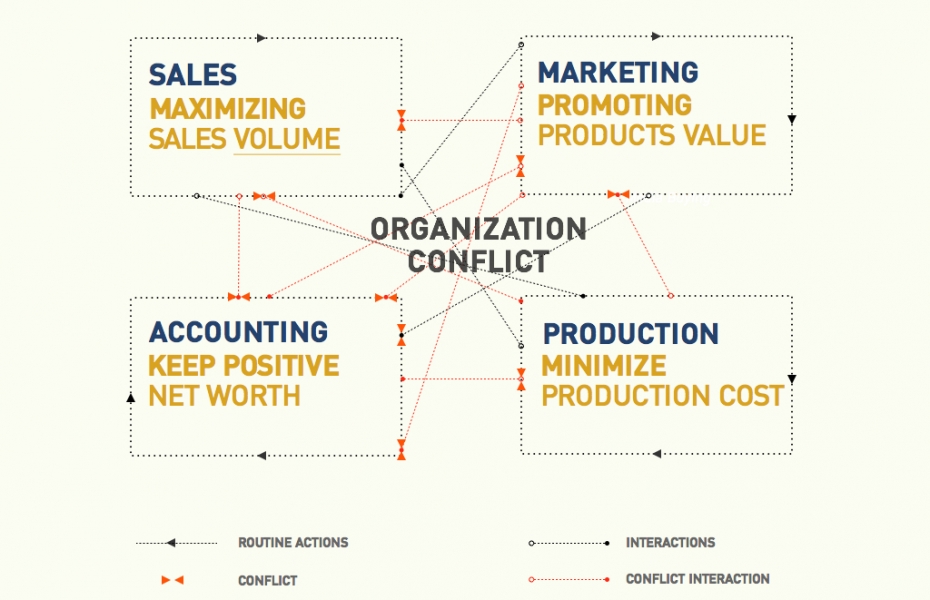
Organization conflict, how to align all departmental goals successfully.
For example, the sales department focuses on how to maximize the company's sales of products or services. The marketing department looks at the marketing budget for advertising and public relations to make customers aware of and trust the products or services as much as possible. The production department focuses on how to minimize production costs in terms of time, manpower, and capital. The accounting department prioritizes financial efficiency.
The conflicting perspectives and goals within each of these departments make it challenging for the organization to move forward. In reality, the outcome of negotiations often depends on who has the reason or more power in different situations.
So, which way should the organization go?
If the organization decides to come to a consensus on the already laid out strategy, all departments must move forward together. Thinking holistically is crucial. The organization needs to have a big picture and ask itself what it wants to become.
In this context, let's take Singapore as an example. Singapore has achieved economic and social progress and has been successful in developing the country. This is an example of a holistic, multidisciplinary, and highly competitive strategic thinking approach.

Singapore is a country with limited natural resources, primarily relying on its population. Unlike our home country, Singapore doesn't have special tourist destinations. So, how does Singapore achieve sustainable growth?
The strategy that Singapore has chosen is to create an experience for people who visit their country. They aim to make visitors feel good and impressed with everything and, at the same time, generate revenue. One limitation they face is their small island size, which makes traveling around the island relatively quick. The challenge for the Singaporean government is to ensure that people who visit, whether for business conferences, tourism, or other purposes, find it highly worthwhile to stay in the country for an extended period.
They drive growth through the formula:
Revenue = Number of Visitors (VISIT) x Number of Days x Spending per person x Frequency of Visits
Singapore attempts to become a hub for businesses to attract more visitors and ensure they connect within the country. For example, they host conferences and establish themselves as the base for global businesses like Google.com. Additionally, Singapore continually adds new tourist attractions, beyond well-known destinations like Sentosa, including Gardens by the Bay, Night Safari, Marina Bay Sands, and the most recent addition, Universal Studios. Their strategy emphasizes regular and frequent visitor arrivals by continually creating new tourist sites over the past ten years.
But how do you impress people right from the airport and make them spend more?
Singapore starts by ensuring a great passenger experience from the very beginning, at the airport. The airport experience must be top-notch in every aspect. They achieve this by taking a holistic view and connecting everything to maximize benefits. As soon as the airport gates open, passengers feel the comfort of the air conditioning throughout the walkway. Welcoming passengers before boarding ensures they have a positive experience. These aspects may seem minor, but it's clear that only a few airports create this feeling for passengers.
Regarding immigration, Singapore ensures short lines for entry. Efficient management and technology allow passengers to breeze through. They don't require passengers to take photos or fingerprint scans, speeding up the process and giving visitors more time in the country.
Security check procedures are optimized. Special glass windows are used to allow staff to check passengers for potential issues and baggage inspection carousels start running as soon as the first passengers arrive. Time limits are set for the first bag to be offloaded to reduce passenger wait times.
Singapore also provides round-the-clock taxi services through an agreement with taxi companies, allowing passengers to easily pay for their rides. The key exchange is that taxi companies must be ready to provide taxis at all times. This facilitates faster spending by passengers and creates a positive impression.
Everyone must make sacrifices to improve the overall experience. The Singaporean government plays a significant role in smoothly implementing this strategy. All departments must collaborate and contribute to Singapore's success and competitive advantage. Even if some departments have higher costs, it's a worthwhile trade-off for a well-thought-out, shared strategy. Leadership is crucial for coordination. Finally, Singapore's recognition as a top airline globally shows the results of their strategic thinking from various perspectives to achieve the country's development successfully.


